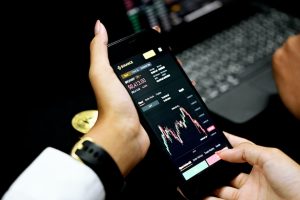Forex trading is a lucrative investment opportunity for many, but it’s also an industry that has seen a rise in fraudulent activities in recent years. Forex scams are becoming more common, and it’s important to know how to identify them to protect yourself from falling victim.
The first step in spotting a forex scam is to understand what it is. A forex scam can take many forms, but the most common ones are Ponzi schemes, pyramid schemes, and fake trading platforms. These scams promise high returns with little to no risk, but in reality, they are designed to steal your money.
Here are some tips on how to spot a forex scam:
1. Promises of high returns with low risk
One of the most common tactics used by forex scammers is to promise high returns with little to no risk. These scammers prey on the greed and fear of potential investors by offering them an opportunity to make a lot of money quickly and easily. If something sounds too good to be true, it probably is.
2. Lack of regulation
Forex trading is a regulated industry, but not all brokers and trading platforms are regulated. Unregulated brokers and platforms are more likely to engage in fraudulent activities, and they may not be held accountable for their actions. Always check if the broker or platform is regulated by a reputable authority before investing any money.
3. Pressure to invest quickly
Forex scammers often use high-pressure tactics to get you to invest quickly. They may tell you that the offer is only available for a limited time or that you will miss out on a great opportunity if you don’t invest right away. Legitimate brokers and platforms will never pressure you to invest quickly or make impulsive decisions.
4. Lack of transparency
Transparency is crucial in forex trading. Legitimate brokers and platforms will always be transparent about their fees, charges, and terms and conditions. If you come across a broker or platform that is not transparent or is withholding information, it’s a red flag.
5. Unsolicited offers
Be wary of unsolicited offers, especially those that come through cold calls, emails, or social media. Forex scammers often target potential investors through these channels, and they may use fake identities or make false promises to get you to invest.
6. Fake testimonials
Many forex scammers use fake testimonials and reviews to create the appearance of legitimacy. These testimonials may be fabricated or paid for, and they may not accurately reflect the experiences of real investors. Always do your research and look for independent reviews from trusted sources.
7. No track record
A legitimate broker or platform should have a track record of success and a history of satisfied clients. If you come across a broker or platform that has no track record or history of success, it’s a red flag.
In conclusion, forex scams are becoming more common, but they can be avoided if you know how to spot them. Always do your research, be wary of unsolicited offers, and look for transparency and a track record of success. Remember, if something sounds too good to be true, it probably is. Stay informed and stay safe.





